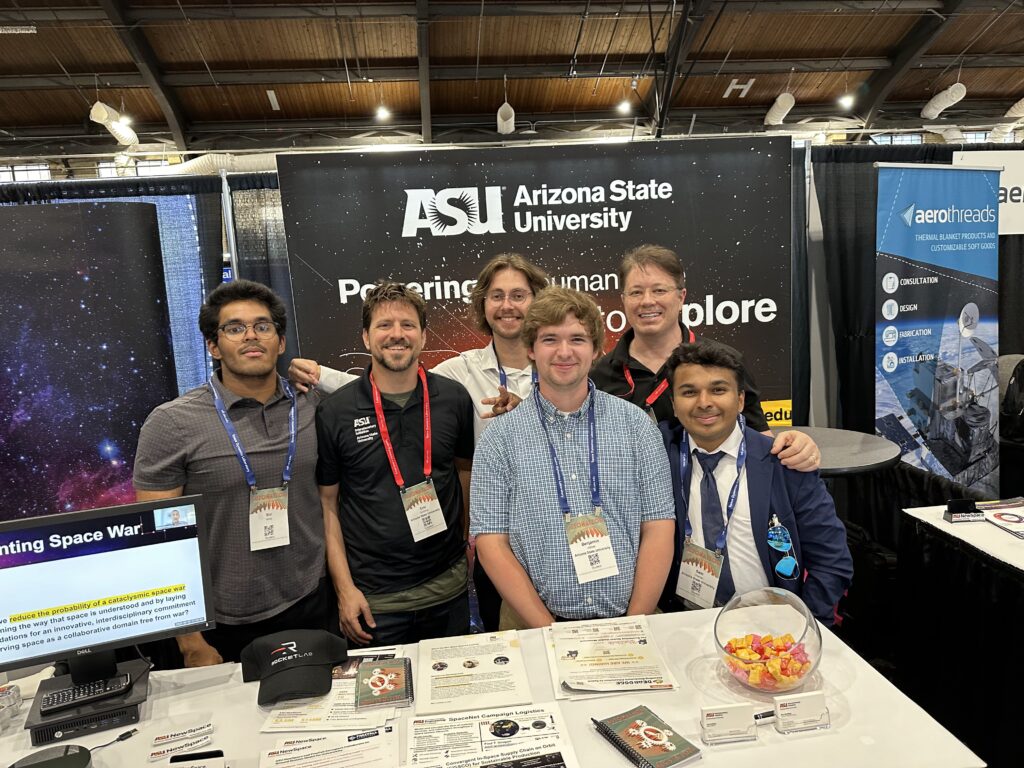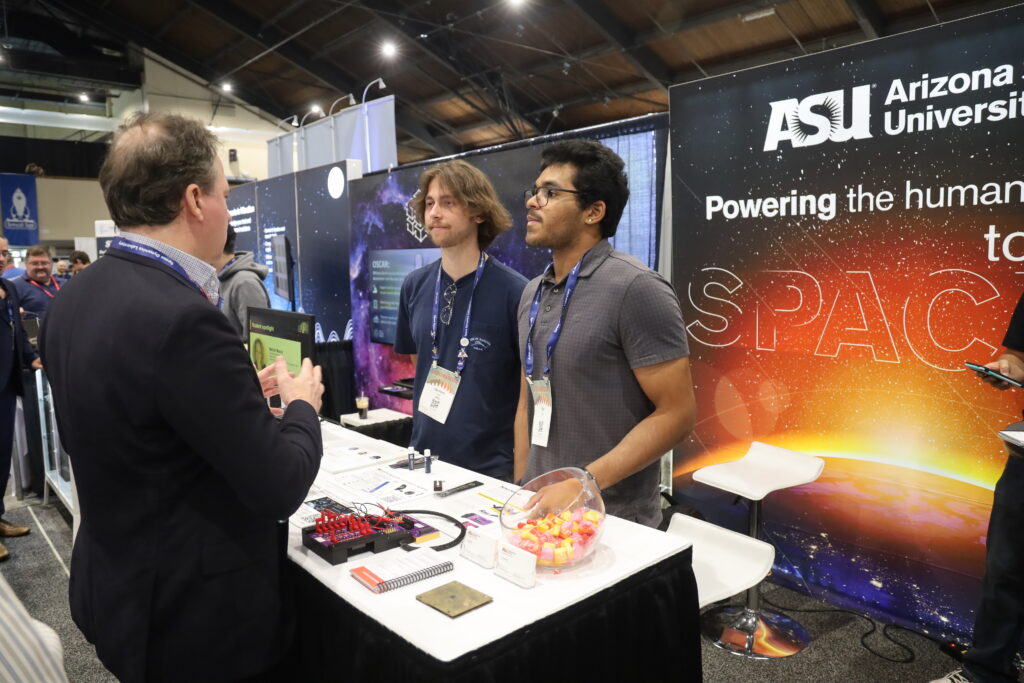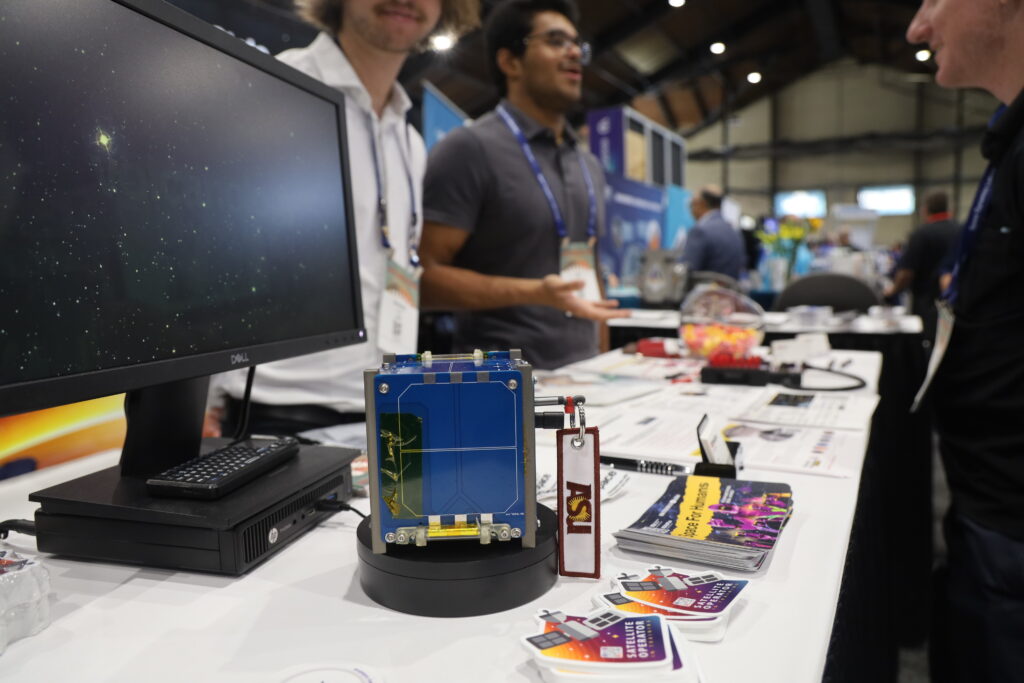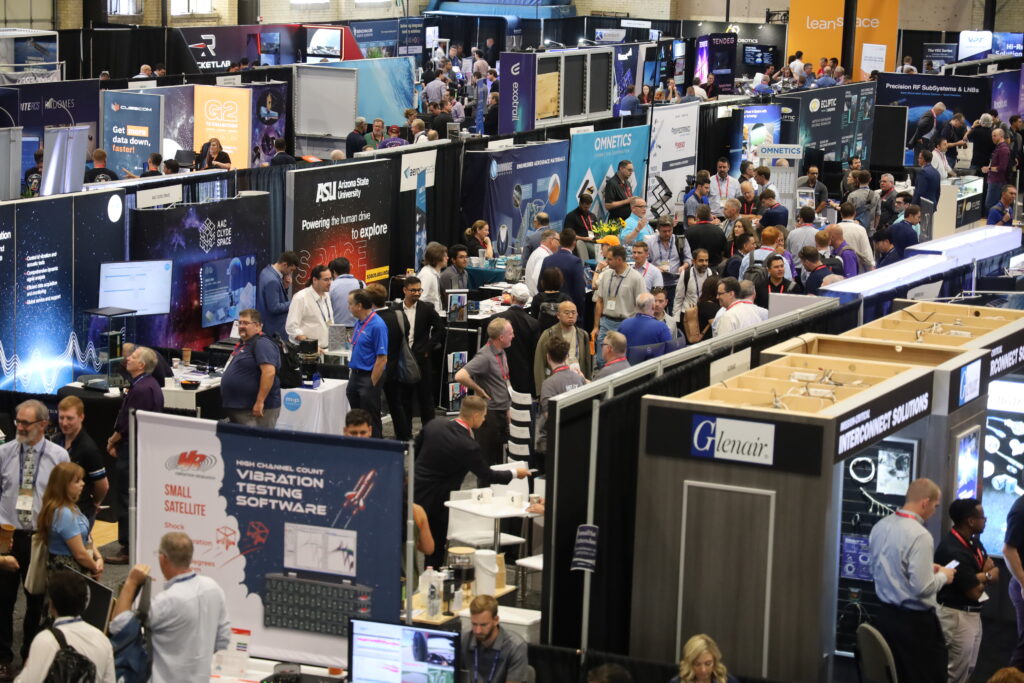The Small Satellite Conference, SmallSat, is an annual conference held in Utah that brings together over 4,000 industry professionals, academics, and students to discuss advancements, trends, and innovations in the field of small, and more affordable satellites. The conference features technical sessions, panel discussions, keynote speeches, and networking opportunities.
In 2024, members of the Interplanetary Lab, along with colleagues from ASU NewSpace, had the opportunity to exhibit at the conference, and we’ve gathered their insights below.
To stay updated on news and opportunities with the lab, subscribe to the Interplanetary Initiative’s newsletter.
Interplanetary Lab attendees:
Joe DuBois – Senior Engineer, Interplanetary Laboratory
Eric Stribling – Assistant Teaching Professor / Interplanetary Lab Interim Director
Sid Vaidy – Masters Student in Robotics and Autonomous Systems
Zach Felty – Masters Student in Electrical Engineering
What were your primary goals for attending the Small Satellite Conference (SmallSat) 2024?
Joe: I was at SmallSat to foster existing relationships and develop new relationships with other academic institutions and industrial collaborators. The lab is always seeking local companies to sponsor new projects and challenges, like Lunabotics and Lightcube 2. Sponsorship provides the opportunity to collaborate with our talented students and contribute industry-expertise while gaining valuable visibility. As a sponsor, the company name will grace their challenge’s project, be it a cubesat bound for space, or a rover bound for NASA. Let’s work together to launch the future of space exploration!
Eric: I went to SmallSat to network with industry and academic colleagues, identify potential collaborations for ongoing and future projects at the Interplanetary Lab, and to learn more about developments in small satellite technologies.

Which sessions or presentations did you find most valuable, and why?
Sid: I found the session on Solar Sails presented by NASA AMES to be the most interesting and valuable. I am a huge fan of solar sail technology and was intrigued at their advancements in solar sail propulsion for solar and deep space missions. They had used solar sails as a means of propulsion and explained the science behind it which I thought was very fascinating. The topic of deployable booms for solar sails was discussed and that inspired me to come up with a proposal to design my own system.
Zach: The presentation I found most valuable was a technology demonstration by the US Naval Academy. They launched a 6U cubesat with two articulating robotic arms onboard. The mission objective was to pass a colorful ring between the two arms and use a ground station to control it in real time. I found the challenges they faced to be very unique and interesting.

How do you think the advancements discussed at the conference will impact the future of small satellite developments at the Interplanetary Lab?
Joe: Several companies approached us to help demonstrate their technology in a prototype cubesat. These companies make various subsystems like propulsion and solar power. The most interesting group is the open source cubesat group. A robust community is growing around this concept. The meeting expected 20 attendees and 60 showed up with considerable interest. The groups come from across the globe, which is exciting because that means that interest in space and the space economy is global even within the cubesat community.
How do you think the innovations highlighted at the conference will shape the future of small satellites in interplanetary missions?
Joe: One of the primary products of the lab is real world experience for young engineers. This hands-on experience will be required for the development of an interplanetary society. They are the workers of tomorrow.
Eric: What was really interesting was to learn about other university cubesat labs for ideas and inspiration both about the cubesat projects and the pedagogical approaches.
Can you share any specific technologies or innovations that caught your attention?
Sid: Although the solar sails were fascinating, a lot of companies were working on innovative solutions in the small spacecraft industry. One of these were deployable antenna structures. The antenna structure was tied in a geometric pattern and deployed in a manner that would amplify the signal as well as conserve space. The idea of this caught my attention to the innovative space in small spacecraft technology
Zach: A specific technology that caught my attention was the use of solar sails for spacecraft propulsion. I found this technology fascinating because spacecraft can reach extreme speeds by simply harnessing the photons emitted by the closest star. I also like it because it makes me think of space pirates.

What challenges or gaps in current small satellite technology were highlighted during the conference?
Joe: There are a number of new companies offering satellite propulsion. Due to the small size, this has been a difficult technology, but now it is starting to be available. Some of these companies have approached us to demonstrate their technology.
Eric: While spacecraft have been miniaturizing over the last decade and really increasing access to space, size is still a major limitation on what can be accomplished.
Sid: The biggest challenge that I noticed is downsizing technology that was addressed very clearly with small satellites. Most of the companies had solutions to downsizing small satellite components but there were niche issues that had yet to be addressed. One thing I had noticed was downsizing antennas and radios for satellites being a huge issue as this would lead to increased material and design costs.
Zach: Launch cost tends to take up the majority of the budget for non-CSLI cubesat projects. It makes it very hard for smaller schools/organizations outside of the US to launch their cubesat missions.
What is the most exciting possibility or future vision for small satellites that you are now more enthusiastic about after attending the conference?
Sid: The conference had opened my eyes to the PocketQube community which I was unaware of until after attending SmallSat. They are 1/8th the size of a regular 1U CubeSat and can pack the same punch. This inspired me to build one through the lab as they would bring in more student involvement throughout campus.
Zach: After attending the conference I was very excited about the implementation of PocketQubes as an alternative to cubesats. They are much smaller in size and, hypothetically, cheaper to build than a standard cubesat. These pico satellites could make it easier to quickly send science/technology payloads into space.
